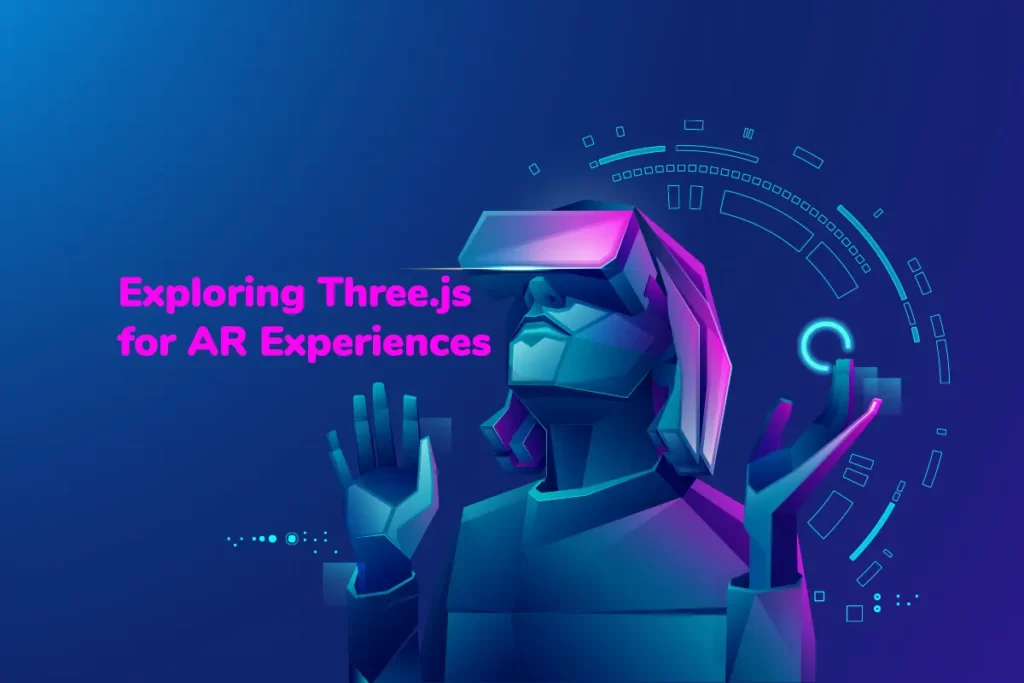As the tech universe constantly transforms, Augmented Reality (AR) is emerging as a powerhouse, largely accelerated by using Three.js for AR experiences. The pivotal role of Three.js in fabricating these encounters cannot be understated. In merging our physical existence with digital nuances, AR unfurls a broad canvas of fascinating possibilities – from captivating gaming adventures to pragmatic business solutions. In this grand scheme, the importance of Three.js in manifesting these creative visions is paramount.
Unfolding the AR Saga and the Ascendancy of Three.js
Augmented Reality has climbed the popularity charts at breakneck speed, courtesy of innovative developments in computer vision, widespread smartphone usage, and sensor technologies. Its power to metamorphose sectors from healthcare to education has been truly extraordinary.
Playing a pivotal role in this transformative journey is Three.js, an impressive invention by Ricardo Cabello and his enthusiastic community. This open-source JavaScript library is a boon for 3D and AR web development. It simplifies the complex world of immersive content creation, sparing developers the nitty-gritty of intricate algorithms or heavy-duty coding.
Harnessing Three.js to Craft AR Masterpieces
Three.js acts as a reliable framework for crafting compelling AR experiences. It offers a robust WebGL renderer for efficient 3D graphics rendering within a browser. Along with multiple lighting techniques and visual effects, it allows the creation of spellbinding AR scenes.
Marker-Based AR
Developers can use Three.js to generate marker-based AR experiences designed to spring to life in the presence of specific markers in the real world. This could be anything from QR codes to images. Aligning virtual objects with real-world markers is a breeze with Three.js.
Geo-AR
It also allows developers to construct location-based AR experiences or Geo-AR. THEY CAN ACCURATELY POSITION VIRTUAL OBJECTS IN THE REAL WORLD using GPS, compass, and accelerometer data. This has created groundbreaking possibilities for businesses to create interactive guides, AR-driven marketing campaigns, and location-based games.
Innovative Business Utilizations of Three.js in AR
E-Commerce
Three.js equips businesses with the ability to offer immersive shopping experiences. Customers can see products in 3D, virtually test them out, and make informed purchases. Virtual showrooms and try-before-you-buy features increase customer engagement and conversions.
Real Estate
The real estate sector benefits substantially from Three.js powered AR applications. Agents can showcase properties in 3D, allowing potential buyers to explore and visualize homes virtually. This leads to more engaging and informed decision-making processes.
Training and Education
AR simulations and training modules made possible by Three.js provide immersive learning experiences. This revolutionizes the learning process, from medical training to operating industrial equipment.
Branding and Marketing
With Three.js, businesses can craft interactive AR ads, virtual product launches, and gamified brand experiences that boost customer engagement and brand recall.
Envisioning the Future of AR and Three.js
AR’s transformative effect across industries is evident, and its future is even more promising. As it permeates deeper into our lives, Three.js will continue uniquely shaping AR experiences.
Advancements in Hardware
As smart glasses and wearable devices become commonplace, Three.js will evolve to support these platforms, enabling developers to create immersive AR experiences that enhance everyday tasks.
Improved Tracking and Recognition
Expect advancements in AR tracking and recognition, which Three.js can leverage to facilitate seamless integration of virtual objects with the real world.
Integration with AI
Merging AI with AR promises to revolutionize AR experiences. Three.js can tap into AI for object recognition and real-time processing, making AR more interactive and realistic.
Collaboration and Social AR Experiences
AR’s mainstream acceptance heralds a future of virtual meetings, remote assistance, and multiplayer AR gaming. Three.js can help developers create social AR experiences that reduce distances and foster collaboration.
Integration with Web Standards
As AR grows, aligning it with web standards like WebXR becomes essential. Three.js, with its strong footing in web technologies, can facilitate this alignment, ensuring that AR experiences are accessible across devices and platforms.
Industry-Specific Applications
The future will see Three.js powering AR solutions tailored to specific industries, from healthcare and education to retail and entertainment, unlocking novel opportunities for innovation and growth.
conclusion
AR continues to revolutionize industries and captivate audiences, Three.js stands tall as an invaluable tool for developers and business leaders. It’s easy to use, integrates seamlessly with existing web technologies, and has an extensive feature set. Adopting Three.js means embarking on a journey of creativity, harnessing AR’s immersive potential to enhance user engagement, boost sales, and create memorable brand experiences.



